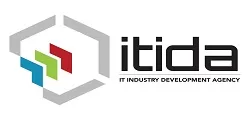By Abdelmonem Fawzi
Most of us get used to the idea of making a purchase and receiving it immediately, but pay for it later, usually over a series of instalments.
This type of payment plan has been available for years. It exploded in popularity during the pandemic as more people shifted to online shopping.
The problem is that this short-term financing which allows consumers to make purchases and pay for them at a future date is gaining popularity in Africa as rising costs of living push digital-savvy shoppers to spread the costs of their big-ticket purchases.
The reason is that they are often interest-free, promising to be an alternative to the high cost of credit many unbanked Africans face, which comes with tough checks.
The problem is that Africa is yet to make serious headway into the sector. Some estimates reckon that the market will be worth $3.9trillion by 2030, leaving plenty of room for African companies, if they can meaningfully tackle the space.
According to a survey by research company, Research and Markets, for the fourth quarter of last year, this innovative payment industry recorded strong growth over the past year and is projected to hit $7.2billion for African and Middle Eastern markets by the end of this year.
As a drive, this is supported by increased e-commerce penetration, along with the impact of an economic slowdown induced by the disruption caused by the Covid-19 outbreak.
In its latest sub-Saharan Africa outlook, the International Monetary Fund (IMF) shows that Russia’s war against Ukraine has prompted a surge in food and fuel prices, pushing the region’s inflation to 12.2% this year — the highest in 15 years.
“The effects of the war will be deeply consequential, eroding standards of living and aggravating macroeconomic imbalances,” the IMF said.
BNPL payments are a fast-growing choice among start-ups and existing merchants. They have now attracted even mobile service operators, as populations in Africa look for ways to manage their tight budgets.
Companies in the BNPL space mostly make money from transaction fees charged to retailers.
While retailers give up a slice of their profits, they benefit from the arrangement, thanks to higher overall sales.
However, there are several reasons why the BNPL space is not that well developed in Africa.
The first is that BNPL is essentially a credit product to individuals and the credit space is not particularly well-developed on the continent.
BNPL companies charge vendors a transaction fee to offer customers the ability to pay for a product over several months in interest-free payments.
The firms cover the upfront cost of the goods and eventually recuperate the total amount from the customers.
Extending credit lines to individuals to buy items that do not generate income and which are not considered assets is seen as even riskier than lending to SMEs and businesses.
Africa has made important strides in de-risking lending, but there is still a long way to go with the use of data and technology to extend credit, especially in legacy banks.
Akin-Moses,the CEO and cofounder of Sycamore, a Nigerian peer-to-peer lending platform, said Nigeria and other African states are mainly cash economies.
He referred to cultural hesitancy to take on debt in some parts of Africa.
“Growing up as a Nigerian, debt is so stigmatised and is seen as a bad thing,” Moses said. “The idea is why I should pay three times when I can just pay once.”
So, we should know first what we mean byBNPL. These initials stand for the phrase ‘Buy Now, Pay Later’. It is a way for consumers to buy and acquire a product now, and have a payment plan of equal instalments until the product is paid up.
Unlike a traditional lay-bye, when a consumer chooses a BNPL payment method, they immediately get the product.
When it comes to traditional models of credit (like a credit card, for example), the differentiating factor, and often, the big appeal is that a BNPL payment option offers consumers interest free instalments.
This means that consumers pay what they would have if they had bought the item in cash, just over a longer period.
A consumer’s first instalment—usually 25% of the total amount—is due at the time of purchase, with equal instalments due over a few weeks or months, depending on the BNPL provider.
So, in practice, what does this look like?
Let’s say you are shopping on Takealot and you are happy with your order. So you proceed to checkout. When selecting how you will pay, one of the payment options is a BNPL provider. In the case of Takealot, it is Payflex.
Once you have selected the Payflex option, below is an image of what you may see:
The million-dollar question now is whether Buy Now, Pay Later really good for the consumer.
The answer is yes and no. While this is a great option for people who do not have good credit scores, and it offers a chance at financial inclusivity, it can encourage impulse buying and lead to consumers accumulating debts they just cannot afford to repay.
It remains to be said that before choosing a BNPL provider, make sure you are fully informed. Are there any penalties involved for late payments? Is it really a free service? Are there hidden costs for having an account with them? Check all terms and conditions of trade as varied and applicable from time to time.






Discussion about this post